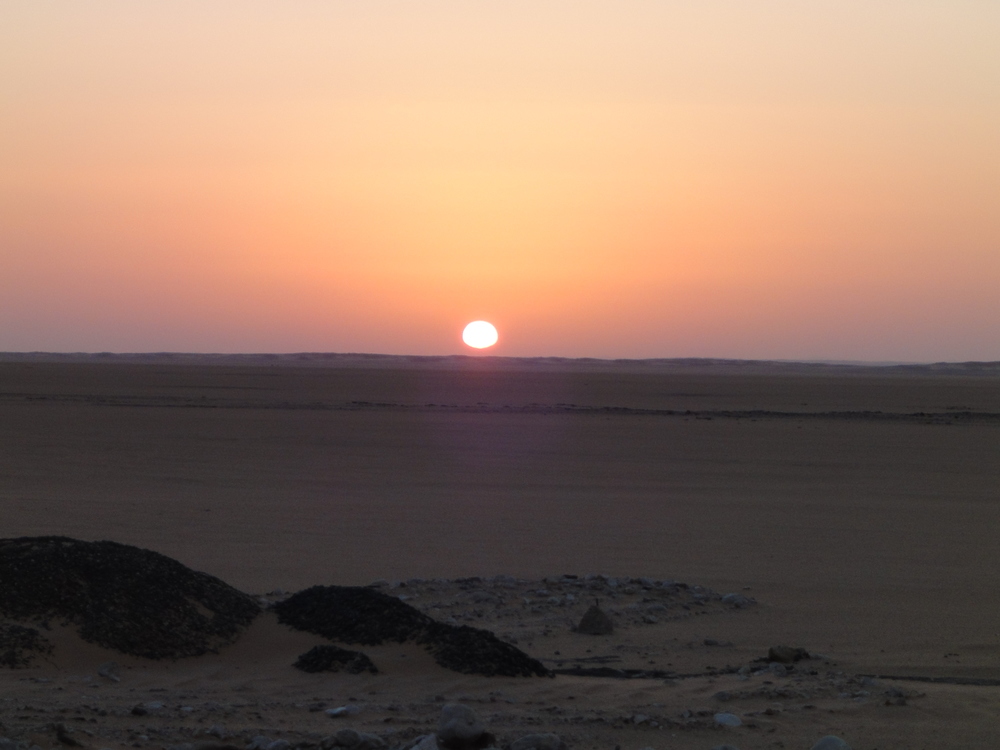
My watch closes in on 4am and we’re dozing lightly on our small bus at Aswan’s bus depot. It feels like we’re waiting for clearance on an airport runway.
Our guide Ahmed is finalising our departure time in a non-descript office as we experience a mix of anxious anticipation and an overwhelming need to slumber. We have about a four-hour bus ride ahead of us to Abu Simbel – one of the most protected and impressionable archaeological sites in the world.
We’re finally given the all-clear and our bus rolls forward in unison with a handful of other buses jam-packed with tourists. It’s our official convoy; the only way we’ll ever reach Abu Simbel by road legally and safely. The lights of Aswan’s sleepy skyline fade behind us and we’re out on the open highway with only empty sandy plains leading us the way. My eyes begin to close as the rhythm of the bus engine rocks me to sleep.
By 6.30am a sharp ray of light stings my eyelids. I’m pulled out of my haze to be face-to-face with one of the most immediate sunrises I’ve ever experienced. Egypt’s pale southern sky is smudged with a defiant orange as the sun peeps over its horizon, waking us all with the promise that Abu Simbel is only a couple of hours away. Its rays pour another day over the gleaming sand flats as we prize open our breakfast boxes to munch away on bread, jam and boiled eggs.
It’s 8.30am. We’re standing in line at the site of Abu Simbel. The air is stuffy and the heat stifling – all the more reason why our 3am wake-up call was essential. To be in Abu Simbel beyond mid morning is potential suicide and the sudden heatwave we experience now is only a small price to pay to witness such a true ancient Egyptian marvel.
As we set on foot over soft dunes, our arrival is announced by the vast breadth of Aswan High Dam and Lake Nasser. To our left, two monuments greet us with their over-towering presence – The Great Temple of Ramses II and The Temple of Nefertari. These unshakeable temples were originally carved out of the mountainside during the unprecedented reign of Pharaoh Ramses II in the 13th century, to commemorate his alleged victory at the Battle of Kadesh. His reign was so prolific that he had another lasting temple carved especially for his favourite wife Nefertari.
What stands before us now is a sense of unmistakeable pharaoic extravagance. Effigies of Ramses and his esteemed wife are smiling eloquently before us, demanding our recognition and respect. Ramses is striking, sitting with unnerving confidence. Nefertari’s stance resonates a time when beauty was immensely revered – perfectly shaped smooth, sleek hair; her curvaceous figure tempts anyone who passes her by. Their demands for attention are convincingly met by our awe.
As we step over each temple’s threshold we succumb to an insatiable feeling in the air that Ramses and Nefertari’s presence still lingers. While the temples were moved in the mid-80s to avoid rising waters from Lake Nasser, they still stand in an act of defiance and victory. Prominent hieroglyphics animate scenes across Ramses’ strong temple walls, depicting Ramses in battle and in preparation for the afterlife. These walls remind us we are only mere mortals who are pacing the hallways to experience Ramses’ legacy.




